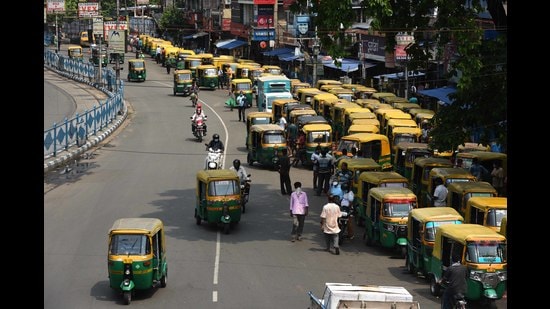How to build a green infrastructure grid
Instead of investing only in metros and highways, spend on smart rail, green transport, climate-resilient water systems, and refurbishing existing infrastructure
After World War II, the United States (US) built a 70,000-kilometre interstate highway network over 30 years, at what now seems a modest cost, in today’s prices, of $500 billion. In China, the astonishing growth in the last decade of the high-speed rail network from zero to about 38,000 km at the cost of nearly a trillion dollars has eclipsed its concurrent investment in roads under Beijing’s 7918 plan — a network just a little longer than the US interstate system. To add to this, China built 8,000 km of urban metros in about 45 cities and increased hospital beds from 1.7 to 4.3 per thousand. All in this century (starting around when India began its national highway development) and accelerating after the global financial crisis to prop up the economy and achieve a smoother transition from double-digit growth to the current sedate 5% a year, which is still high, given China’s income level.

India’s emphasis on expressways and urban metro rail to underpin its Covid-19 recovery thus seems similar though limited — just tens of billions of dollars a year. But is it compatible with LIFE (lifestyle for environment) as articulated by Prime Minister Narendra Modi at the Glasgow climate meet? Does it take us along the panchamrita (India’s five promises at Glasgow) path — to a green energy-efficient economy?
The obsession with highways has to be passé, in a world moving to electric public transport. Even if it’s about roads clogged with cars powered by renewable electricity, new investments in the highway sector must focus on building fast-charging stations, rather than laying asphalt.
Mumbai airport to Delhi airport is five hours, door-to-door another two. Beijing to Shanghai is a similar distance, but takes just over four hours by hi-speed rail. But, even without high-speed rail, there is much to invest in Indian Railways. However, it is not necessarily building new tracks. Instead, signalling must be improved to build smarter, higher-speed rail.
Such investments were not prioritised earlier because decisions were dominated by cadres who preferred to lay new track and electrify lines. Improved signalling will increase track capacity and using dedicated freight corridors and rationalising passenger trains, based on the pandemic experience, we must start timetabled goods trains. This will remove a major impediment to world-class logistics and should be a priority for the PM Gati Shakti Plan. As a bonus, a 10-hour Mumbai–Delhi trip could attract air passengers back to rail.
In 2019-20, urban metro rail received as much central support as all other urban schemes such as Pradhan Mantri Awas Yojana, National Urban Livelihoods Mission, Atal Mission for Rejuvenation and Urban Transformation (AMRUT), Smart city projects, and Swachh Bharat Mission combined. The recently inaugurated nine-km line in Kanpur, part of a ₹11,000 crore, 24-km project, is a good example of showpiece metros in cities without well-functioning bus services. The city barely has 100 standard public buses. The same investment could have provided a fully electric functional city bus system, supported by electric three-wheelers — to dramatically increase the use of public transport. But, that needs imagination and ambition — while metros only need imitation.
The goal of an electric road-based public transport system at a cost and convenience that eliminates the desire to use personal transport needs large investment. In recent years, municipal infrastructure has been the largest component of infrastructure investment in China. An Indian technology mission that focuses on electric buses and charging infrastructure in all million-plus cities will boost domestic investment in such technologies, build a future-ready urban transport system and make India a global supplier. Nor are buses indispensable. Kolkata has had an effective network-based autorickshaw system for many years. It is environmentally friendly, economical and convenient for users, and low investment for entrepreneurs. Such intermediate public transport systems, if electrically powered, can be the backbone of green urban transport in smaller cities that cannot sustain bus services, as well as complement bus services in larger cities, creating an end-to-end electric public transport system. Further, given the short lives of public transport vehicles, any lock-in costs, if a hydrogen economy becomes feasible, would be limited.
In addition to transport, the water and wastewater sector need resources. AMRUT 2.0, the urban Jal Jeevan Mission is already an ambitious intervention. Water infrastructures must, however, take climate resilience into account, and plan for extremely variable supply. The major use of water is in sanitation, especially in piped sewerage systems, which need water and power to transport human waste from households to treatment sites. In the absence of access to piped sewerage, households have, fortuitously, invested heavily in on-site sanitation systems, such as septic tanks. This existing climate-resilient investment needs to be leveraged and built upon by investing in faecal sludge treatment systems and green vehicles to transport sludge, rather than be replaced with a climate-vulnerable piped sewerage system.
Finally, while the passion for new projects is understandable, focusing on maintenance may accelerate our Covid-19 recovery. The rural road network, built in the last two decades, is facilitating the transition away from farms and needs to be in good condition. Refurbishing urban infrastructure in our larger cities is an obvious need and avoids the embedded carbon of new constructions. Maintenance also has the benefit of being quick start and labour intensive, qualities that will contribute to a rapid recovery, as compared to new projects, which can help later, to sustain growth beyond the immediate recovery period.
Taken together, smart rail, green urban transport, climate-resilient water infrastructure and refurbishing existing assets, can be the basis of an infrastructure LIFE, if only we had the imagination to invest in them.
Partha Mukhopadhyay is a senior fellow, Centre for Policy Research
The views expressed are personal
All Access.
One Subscription.
Get 360° coverage—from daily headlines
to 100 year archives.



HT App & Website







